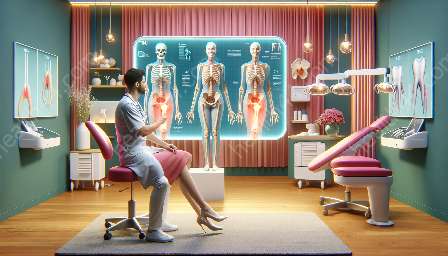The temporomandibular joint (TMJ) is a complex joint that is susceptible to various disorders, presenting challenges in diagnosis and management. Understanding the anatomy of the temporomandibular joint is crucial for addressing TMJ disorders. This article will explore the anatomy of the TMJ, common disorders, current challenges in diagnosis and management, and future prospects for improved understanding and treatment.
Anatomy of the Temporomandibular Joint
The TMJ is a hinge joint that connects the mandible (lower jaw) to the temporal bone of the skull. It is a bilateral joint, with one located on each side of the head. The joint consists of various components, including the articular disc, muscles, ligaments, and synovial membrane. The articular disc divides the joint into upper and lower compartments, allowing for smooth movement of the mandible. Muscles such as the temporalis and masseter play a crucial role in jaw movement, while ligaments provide stability to the joint.
Temporomandibular Joint Disorders (TMJ)
Temporomandibular joint disorders encompass a range of conditions that affect the TMJ and surrounding structures. Common symptoms include pain in the jaw joint and surrounding muscles, limited jaw movement, clicking or popping sounds during jaw movement, and difficulty chewing. Disorders may be caused by various factors, including trauma, arthritis, malocclusion, or excessive stress on the joint.
Challenges in Understanding and Managing TMJ Disorders
Diagnosing and managing TMJ disorders present several challenges. One of the primary difficulties is the overlapping symptoms with other conditions, leading to misdiagnosis. Additionally, the multifactorial nature of TMJ disorders requires a comprehensive assessment of contributing factors, including physical, psychological, and environmental influences. Furthermore, treatment options vary widely, and there is no one-size-fits-all approach. Individualized care tailored to the patient's specific condition and needs is essential but may be challenging to achieve within existing healthcare systems.
Future Prospects in Understanding and Managing TMJ Disorders
Despite the challenges, there are promising prospects for the future understanding and management of TMJ disorders. Advancements in imaging technology, such as cone-beam computed tomography (CBCT) and magnetic resonance imaging (MRI), enable more detailed visualization of the TMJ and associated structures, aiding in accurate diagnosis and treatment planning. Additionally, ongoing research into the underlying mechanisms of TMJ disorders, including genetic, hormonal, and inflammatory factors, may lead to targeted therapies and personalized treatment regimens. Furthermore, interdisciplinary care involving dentists, maxillofacial surgeons, orthodontists, and physical therapists allows for comprehensive management of TMJ disorders, addressing both the biomechanical and psychosocial aspects of the condition.
Conclusion
Overall, the understanding and management of temporomandibular joint disorders present both challenges and future prospects. A comprehensive understanding of the anatomy of the TMJ is crucial for accurate diagnosis and effective management. By addressing the challenges through interdisciplinary collaboration and embracing technological and scientific advancements, the future holds promise for improved outcomes in the understanding and management of TMJ disorders.


